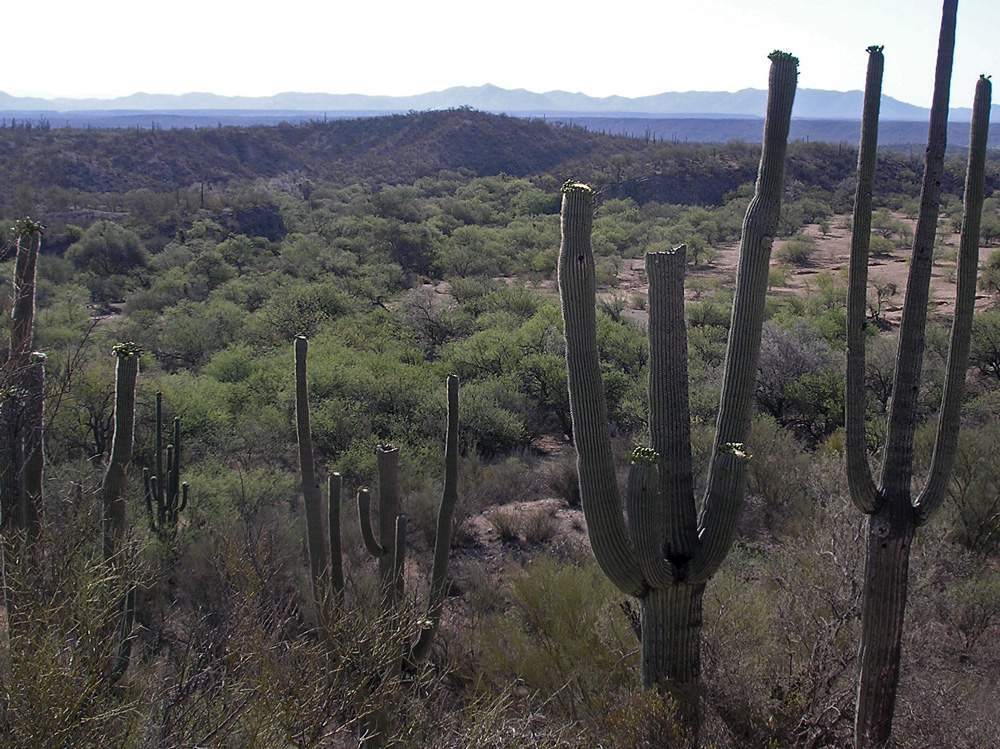Xero-Riparian
Xero-riparian is low-elevation southwest regional vegetation community. It is very productive and important for wildlife. There are few perennial streams in our region, but there are innumerable dry washes, which can carry a lot of runoff during storms, and can have ground water accessible to mesquite and other long-rooted trees. Any additional water, along with better associated bottomland soil, are enough to create this community.
Species diversity of flora and fauna increase substantially in xero-riparian areas, but more importantly the stature of trees and shrubs changes drastically. Some vegetation along desert washes even in extremely dry western Sonora can literally be impenetrable jungles of shrubs and trees, providing more of everything the 'web of life' needs to thrive. Indeed many species would certainly not exist in our region at all if it were not for this community.
The most dominate and perhaps most important species of the xero-riparian community is the velvet mesquite (Prosopis velutina). It dominates xero-riparian in most of our region in both Sonoran Desert as well as thorn-scrub and TDF. Only in extreme western Sonora and Arizona does it get replaced by two other common xero-riparian trees, ironwood (Olneya tesota) and to a lesser extent blue paloverde (Parkinsonia florida). Another common Xero-riparian tree in Sonora is the beautiful palo chino (Havardia mexicana), which can tower over it's largest mesquite neighbor.

